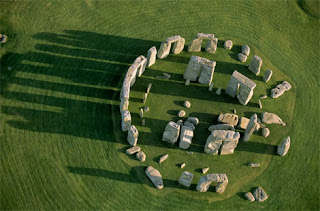1. Iconography is the branch of art history which studies the identification, description and the interpretation of the contents of images.
2. Christ Pantocrator - Saint Catherine's Monastery
The oldest known image of Christ Pantocrator meaning "almighty." It is located in Saint Catherine's Monastery on the Sinai Peninsula in Egypt. The two different facial expressions on either side emphasize Christ's dual nature as fully God and fully human.
3. Saint Catherine's Monastery: Sinai Peninsula, Egypt
There are claims that this is the oldest working Christian monastery in the world. Is the location of the oldest known image of Christ. (Another monastery across the Red Sea in the desert south of Cairo claims the same thing. :-)...)
4. Hagia Sophia: Istanbul, Turkey
This was the seat of the Patriarch of Constantinople and religious focal point of the Eastern Orthodox Church for nearly 1,000 years. It was built on the orders of Emperor Justinian and is the epitome of Byzantine architecture. It was later on a mosque during the Ottoman Empire and has been converted into a museum. The city's name has also been changed to Istanbul.
5. Stonehenge: Wiltshire, United Kingdom
Its original purpose is unclear to us, but some have speculated that it was a) a temple made for the worship of ancient earth deities b) an astronomical observatory for marking significant events on the prehistoric calendar c) a sacred site for the burial of high-ranking citizens from the societies of long ago. Construction of the monument has been attributed to many ancient peoples throughout the years: Druids, people of the neolithic period, and Beaker Folk (named thus for their pottery work). The inner circle (bluestones weighing 4 tons) was built about 2,000 BC and the outer circle (giant sarsen stones weighing up to 50 tons) added later on, possibly by another people.
6. Machu Picchu: Urubamba Valley, Peru
Machu Picchu, which means "old mountain," is located halfway up the Andes Plateau—in the Amazon jungle and above the Urubamba River. Originally a 15th century Incan settlement, the magnificent city was "lost" for three centuries, then rediscovered in 1911. One of the New 7 Wonders of the World.
7. Chichen Itza: Yucatan Peninsula, Mexico
Chichen Itza is located in Mexico in the Yucatan Peninsula. It is the location of Mayan ruins. The best known construction on the site is Kukulcan's Pyramid, El Castillo, a square-based, stepped pyramid approximately 75 feet high. This pyramid was built for astronomical purposes and during the vernal equinox (March 20) and the autumnal equinox (September 21) at about 3 P.M.. the sunlight bathes the western balustrade of the pyramid's main stairway. This causes seven isosceles triangles to form imitating the body of a serpent 37 yards long that creeps downwards until it joins the huge serpent's head carved in stone at the bottom of the stairway.
8. Wooden Statue of Bodhisattva; Song Dynasty
This is one of many Song Dynasty wooden statues of Bodhisattva, meaning "enlightened existence."
9. Angkor Wat: Cambodia
Angkor Wat is a temple located in Angkor, Cambodia. It was built during the Khmer Empire and is the epitome of Khmer architect. It has become a symbol of Cambodia. (Appears on the flag) It has remained a religious center and is a popular destination of tourists.
10. Dogu: Jomon Period
Miyagi Dogu 1000 - 400 BC
Dogu Jomon Musee
Japan Dogu are small humanoid and animal figurines during the late Jomon Period of prehistoric Japan. These date from 14,000 BC to 400 BC. They are considered to be representations of Mother Goddess and suggest an association with fertility and shamanistic rites.
11. Borobudur; Java, Indonesia
Stupa
One of the reliefs
Borobudur is a Mahayana Buddhist temple. The monument is both a shrine to Buddha and a place for Buddhist pilgrimage. It is also the largest Buddhist temple in the world. It has 2,672 reliefs and 504 Buddha statues.
12. Todai-ji Temple; Nara, Japan
This is the largest wooden building in the world. It also houses the largest Buddha Vairocana in the world. This building is still used today as school.
13. Horyuji Temple; Nara, Japan
This is a Buddhist Temple which has one of the oldest wooden pagodas in the world.
14. Phoenix Hall: Uji (Kyoto province), Japan
Byodo-in was a rural villa built in 998, Heian Period of Japan during the Fujiwara rule. The Phoenix Temple is the only original building in the complex. The structure has been converted into a Buddhist Temple.
WARNING : I do not want anyone to say that the buildings look the same... obviously they have a similar architectural style, but in the same spirit that I expect you to distinguish between Westminster and Notre Dame (from the frontal view) I expect you to find distinguishing features within these structures. Enjoy.
Sorry so late Madison I just got home... :)

























































